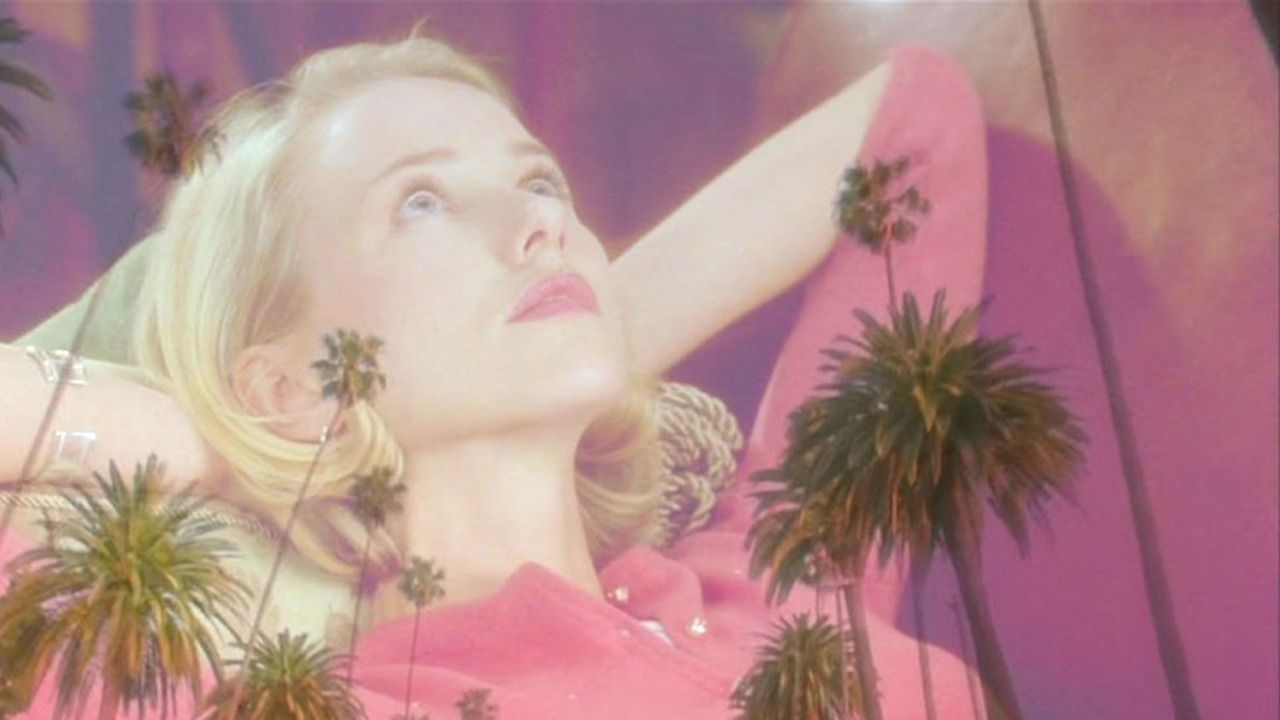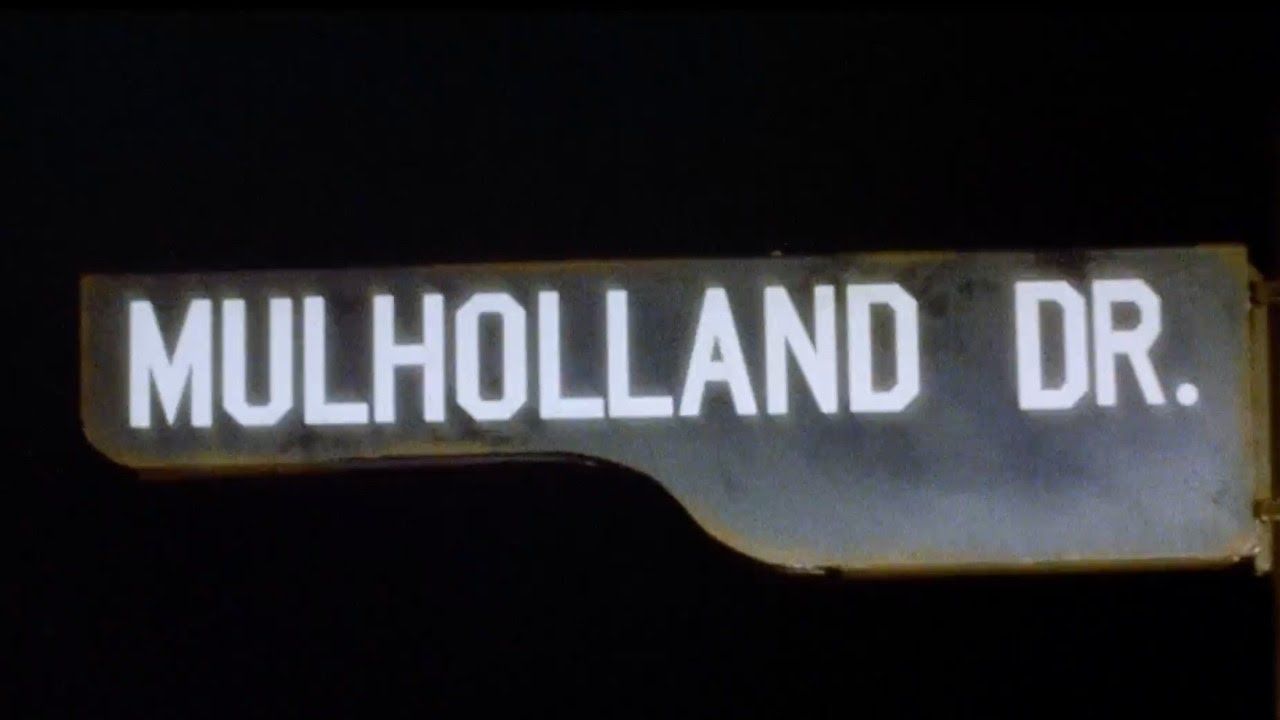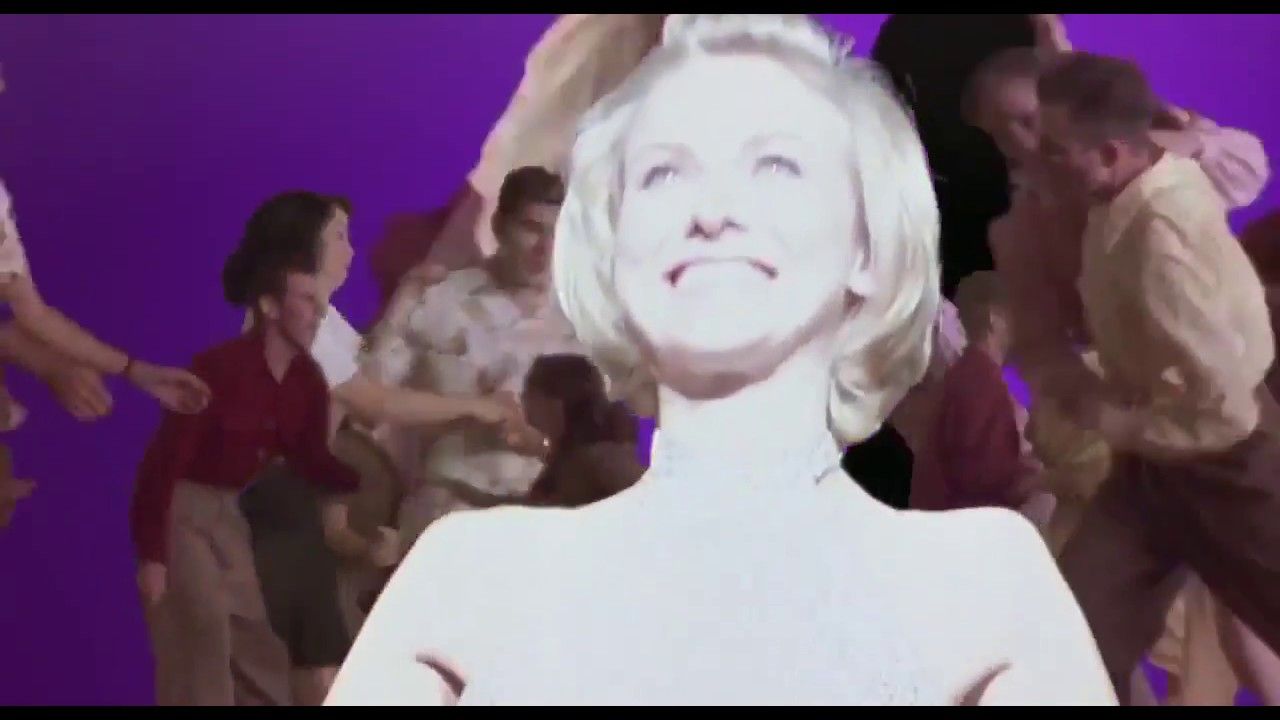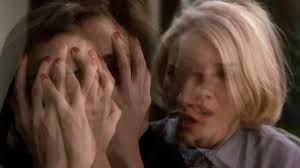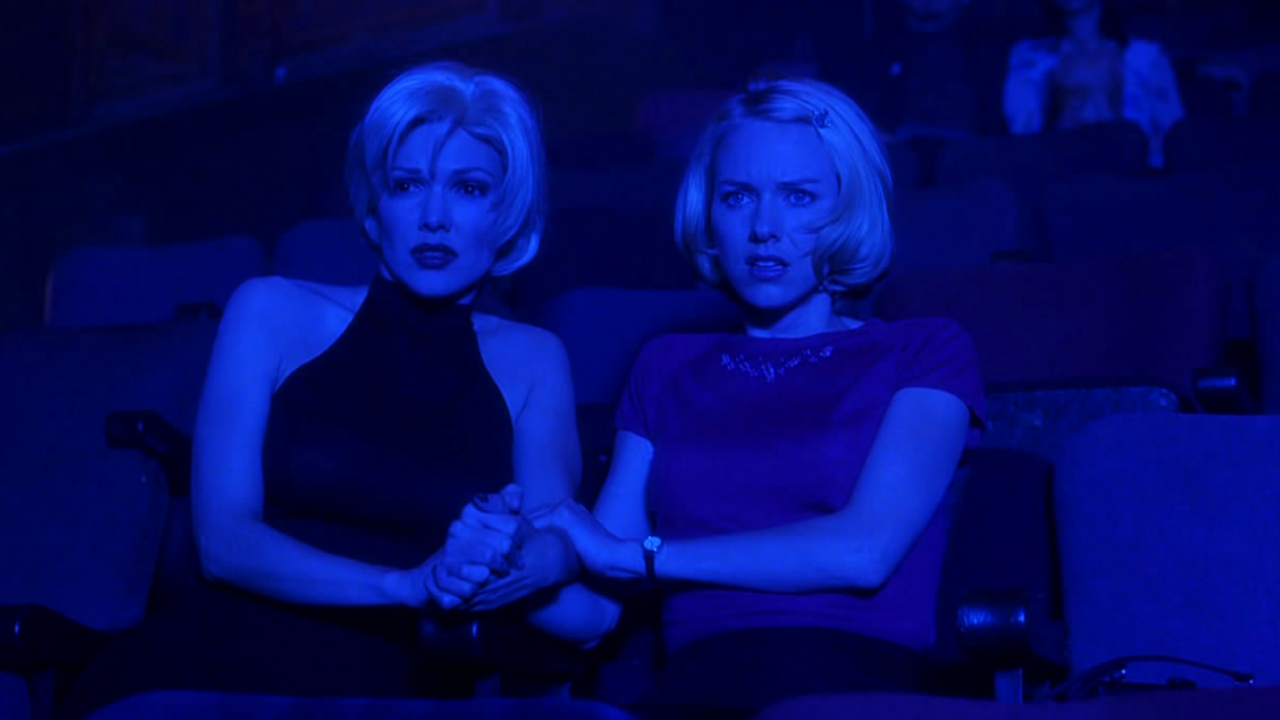Mulholland Drive is a dark and lost highway barely lit by unseen headlights, one which intersects Real Road and Symbolic Street, along with every imaginary alley. It's a route which most viewers avoid, a drive with too much death and one with too many reflective surfaces; accidents happen here, and cars collide chaotically. Instead, audiences prefer brighter roads which propagate the illusion of safety, avoiding avenues with any real mirrors and opting instead for a pure escape toward simpler cities constructed with concrete fantasies. Mulholland Drive embraces these fantasies, too, but then crashes through them with subversive, manic energy. In some ways, it is both the greatest fantasy and anti-fantasy film ever made, and here's what makes that possible.
Everything's a Fantasy, Including What's Not
Fantasy has overtaken popular culture. There was a time when caped crusaders and super-powered people in tight costumes were considered too silly and fantastical for mainstream audiences, but the superhero genre is more popular now than ever. There was a time when Young Adult novels and great books for children were mainly read by young adults and children, but now forty-year olds flock to franchises about kid wizards and teenage vampires. The mainstream is currently awash in fantasy, with audiences relating more to idealized heroes than they do real people. Perhaps this is a byproduct of the collectively growing disillusionment toward actual sociopolitical realities. As film theorist Todd McGowan writes in his article “Finding Ourselves on a Lost Highway: David Lynch’s Lesson in Fantasy:”
[In fantasy], the dreariness and the dissatisfaction of […] life are remade into a fully developed narrative [...] Subjects flee into fantasy precisely because it seems to cure the dissatisfaction they cannot otherwise escape [...] It works to cover over the many sources of discontent that plague the subject.
One shouldn't be mistaken about superheroes-- all cinema is about fantasy in some way, and all of David Lynch's sparse work this century has been about the relationship between the two, with cinema and fantasy ricocheting off each other like philosophical bullets on artistic surfaces. Even the harshest, grittiest, most realistic fiction films and documentaries are necessarily phantasmal, as the imaginations of their creators subjectify the work even before they're viewed on a smooth screen, itself a flattened plane of dreams. The essence of fantasy, then, isn't simply swords and sorcery, or dungeons and dragons. No, true fantasy is about a subtle (and sometimes necessary) deception which occupies the spectrum between reality and idealism, or engagement and escapism. In this sense, every movie inhabits the Imaginary realm by definition.
Drawing on the work of historian and literary critic Tzvetan Todorov, Weber Griffiths, in his BYU thesis on fantasy, writes that, "it is a space between what we will call the ideal (i.e. the marvelous) and the real (i.e. the uncanny/real world). In true allegorical fashion, this narrative space or gap mirrors our own lives and existence. Every person is faced with a life that sees a gap between the ideal and the real. And so, the Fantastic brings us stories that dwell symbolically in this liminal space." What David Lynch has done so well, and what Mulholland Drive was better at than nearly any other film, is living in that strange space and pointing it out to viewers, who are then able to better distinguish between what's real and what's a mere ideal. Most audiences are willingly and gleefully deceived by movies, but Lynch's film trains us to register this deception, especially when it becomes dangerous.
Spoilers ahead.
Exploring The Real, and Everything Else People Avoid
For many, the plot of Mulholland Drive is infamously labyrinthine; it seems to paradoxically be a film that one can only really watch after already seeing it. Piecing together Lynchian puzzles has been a frequent delight for cinephiles for decades, so here is the reconstructed, linearized plot in simple terms.
The film follows Diane (perfectly played by Lynch collaborator Naomi Watts), a young woman in Los Angeles who achieved a slice of success as a 15-year-old, winning a jitterbug competition and subsequently catching the acting bug. The film opens with oddly edited jitterbug dance moves across a purple background as Diane's superimposed face shines from the spotlight, the applause only accentuating the sparkle in her expression as her parents (or grandparents) sidle up next to her with eyes blind with pride. This is her moment, her ego ideal; in a Lacanian sense, it's her mirror stage, the sudden gathering of her identity into the realization of whom she thinks she is-- a beautiful, talented, beloved star.
Hollywood had other plans, though. Los Angeles is a fantasy factory, receiving nation-wide idealism and churning out harsh realities for 99% of its population. Diane is a struggling actor (and possible waitress and prostitute) living in a terrible apartment and enduring an abusive relationship with Camilla (sensuously played by Lauren Elena Harring), a fellow actor Diane loses roles to but who keeps her around for the adoration. Camilla is Diane's 'big Other,' a figure of radical alterity who represents everything Diane desires but feels unable to assimilate into her own identity (beauty, fame, confidence, relationships, success). When Camilla accepts a marriage proposal from a hotshot director with more hair gel than kindness, Diane goes off the deep end.
She meets a clumsy but cocky hit man at a dilapidated diner, sliding him a headshot of Camilla and saying, "This is the girl." She hands the man a purse full of cash and is told that she'll see a blue key when the hit is done. Over the next three weeks, Diane's guilt gradually grows until she is a paranoid, delusional mess. The blue key rests atop her coffee table, taunting her. Diane lets out a series of blood-curdling, soul-draining screams before collapsing on her bed, grabbing a gun, and blowing her brains out. The end.
Showing How the Fantasy Sausage Gets Made
Except, the previous synopsis only makes up the final twenty minutes of the film. It is the Rosetta Stone (or blue key) for understanding its first two hours. This is where things become subversive, brilliant, and obnoxious, depending on who is asked. Diane had experienced a total rupture in her identity; she turned out to be none of the thing's her superego told her she was, and then she killed the woman who composed that ideal and formed her Symbolic order. By murdering Camilla, Diane had to face herself in all her division-- she was not a nice, small-town, talented, up-and-coming star, and she'd murdered the one person who represented the laws of her ideal identity.
Thus, facing a complete fragmentation, she created a beautiful fantasy (the first two hours of the film) where she could have Camilla back in a way that was more controllable, and where Diane could be the great actor and compassionate person with the great future she'd desired. This fantasy world is brightly lit with primary colors and 1950s-esque characters, dialogue, and scenery. It is a regression (and repression) to the fantasy of 'the good old days,' a world where baggage is never stolen and landlords are caring and kind, where auditions are perfect and mysteries exist to be solved. It contains elements from The Real of Diane's life, but with names, faces, and events switched around.
Most importantly, the fantasy creates the opportunity for Diane to assimilate Camilla's identity into her own and become her own ego ideal. The Camilla of fantasy Hollywood is an amnesiac who is wholly malleable; she says things like "I don't know who I am," an identity crisis which reverses their roles in The Real. Throughout the fantasy, Camilla slowly looks more and more like Diane, and the two get increasingly physical. They stare into one of the film's many mirrors, looking almost identical in a new iteration of the mirror stage. They lay naked in bed, Diane facing the camera with Camilla in profile so that their separate faces align and form one whole. The fantasy, however, is crashing down all around them, and the more Diane actually gets what she desires and lacks (the objet petit a, in Lacanian terms), the closer The Real comes to shattering her Imaginary self.
It's in this meticulous way that David Lynch reveals the construction of fantasy-- why people do it, why they like it, why they need it, how it's helpful, and how it hurts. He practically psychoanalyzes the notion of fantasy itself, locating the reasoning behind it and navigating its Symbolic order and the way it avoids The Real. By seeing how the sausage gets made, audiences become better equipped to deal with fantasy in film and in life, because sometimes too much of the Imaginary can ruin the real world around everyone.
Collapsing the Fantasy
The Real intrudes upon Diane's pleasant fantasy in several ways. Myriad scenes of shady figures, surreal absurdity, genuine horror, and conspiratorial meetings enshroud Diane and Camilla's story and compliment it, sketching even more meaning along every margin of this movie. Entire books and bevies of essays have been written on Mulholland Drive, so it's unfair to briefly skim some of its symbolic surface here. Suffice it to say, Lynch collapses Diane's fantasy beautifully and tragically, using every directorial tool in his cinematic toolkit.
A surprisingly tender and touching sequence in Mulholland Drive occurs at a blue-lit, red-curtained concert at club Silencio, where a magician emcee speaks to the audience (and Diane in particular) about the inherently fantastical element of all art. Music plays, but it's disembodied and non-diegetic; a man plays a trumpet, which keeps harmonizing after he puts the instrument down. "There is no band," the magician (a mouthpiece for Lynch) says. "This is all a tape recording. And yet, we hear a band. If we want to hear a clarinet, listen [...] It is an illusion. There is no orchestra."
There is something incredibly healthy and balanced about recognizing fantasy rather than being ignorantly deceived or manipulated by it. In a fascinating way, one is actually able to enjoy the fantasy more once one realizes what it is-- an Imaginary thing, absent from The Real. One can then traverse the fantasy, keeping in mind, as David Lynch has constantly warned before his retirement, that too much of the Imaginary is incredibly dangerous. That was Diane's tragedy, after all-- she was all ideal, with no real left.

